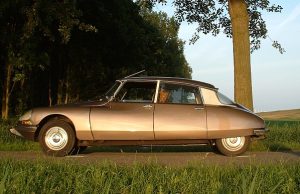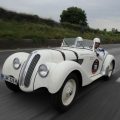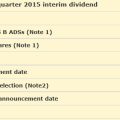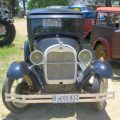The Startup History of Citroen – How one of the most successful European car companies was started
Citroën is a French automobile manufacturer, founded in 1919 by André Citroën. The company has produced an extensive range of vehicles, including cars, vans, trucks, buses, and tractors. Although the brand is now renowned for its luxury cars, it has also had a significant impact on the world of mass production, introducing a number of innovative technologies and production methods. Within a short span of eight years, the company headed to its listing as Europe’s largest automobile company and ranked fourth in the world’s automobile commerce. Citroen is noted for its newest and most innovative technologies in automobile history. The company has immensely justified its caption of ‘Creative Technology’.
History
The company’s history dates back to pre–World War I days when André Citroën was leading the French motor industry. He had the vision to make vehicles that were affordable to all classes of people, hence he set up the first French assembly line and developed the world’s first mass–produced car, the Type A. This opened up opportunities for the thousands of workers who had been laid off from the French armament forges after the war.
Early Years of the Auto-giant
Andre-Gustave Citroen was initially engaged in building armories for France during World War I. In the post-war period, the entrepreneur operated a factory but without any emphasis on a particular product. In the year of 1919, the commercial sector started hosting automobiles, making its establishment with the TYPE A (conventional). Jules Salomon, the CDO (Chief Design Officer) from Le Zebre took care of the layouts of TYPE A.
A daring marketing strategy was put into action by Citroen, the Eiffel Tower was used as an advertising place, showing the illuminated name of the company. He conducted expeditions on his brand over large parts of Asia and Africa, involving journalists and scientists.
Citroën’s success continued in the years following the war. In 1924 the company released the first of its compact cars, the Citroën 5CV, followed by the 7CV and 10CV models, which became a hit with consumers due to their low cost and reliable performance. By the mid-1920s, Citroën had become the world’s leading car manufacturer in terms of production volume, a position made all the more remarkable by the fact it had been achieved in a mere five years.
The American engineer, Edward G Budd, who was already successful after his contribution to the mechanism in the early 20s, developed a commercial relationship with Citroen. With his assistance, Citroen introduced the foremost European complete steel-bodied car, the B-10 in 1924. The model received a successful market status, but the contemporary manufacturers of the wooden car established a tough competitive sphere for Citroen by changing their designs. Citroen overcame this competitive sphere, and its sales never achieved a lookdown. The cost-effectiveness of Citroen was the major factor that accommodated its huge sales, but initially, Citroen did not make enough profits and suffered losses.
Citroen’s introduction of Rosalie and Traction Avant in the 1930s rescued the situation with the implementation of new automobile technologies. However, things didn’t start very well. The production cost of these two models was initially much higher than the other models and this destroyed the company’s finances. In the year of 1934, Citroen filed for bankruptcy. At that time, Michelin Company being the biggest creditor of the company, decided to become its biggest shareholder, buying out the business. However, Michelin’s cooperation there led to a huge market acceptance of Traction Avant, and finally, the company mended its losses. The manufacturer Andre-Gustave Citroen passed away in 1935, and Pierre-Jules Boulanger became the VP and the head of the design and engineering department.
No history of Citroën would be complete without mentioning its iconic 2CV, which was released in 1948 and quickly became one of the most recognizable cars of the 1950s. The 2CV was light, simple, and extremely affordable, and it played a major role in introducing cars to rural areas of France, where motorized transport had previously been unheard of.
The segment of Citroen’s landmark from the early 20’s-60:
• 1924: B-10
• 1933: Rosalie, a diesel engine-equipped passenger car.
• 1934: Traction Avant
• 1954: hydro-pneumatic self-leveling suspension technology (the world’s foremost)
• 1955: Citroen DS (a revolutionary vehicle with a sudden and foremost emergence of disc brakes)
• 1967: Introduction of swiveling headlights in variant Citroen car models (noted the first introduction of swiveling headlights).
Meeting the Demand Of People
The way Citroen paved its way for a remarkable establishment in the automotive industry can be concluded as its concern with public requirements. If you consider Citroen’s automobile aspects from the long 20s–60s, you can see how the auto-giant was intended for revolutionaries to suit the vehicle necessities of the masses. In fact, the auto-giant never dismissed this follow-up and continues so, which makes it one of the most well-adored car brands of the 21st century.
The last decades of the 20th century saw Citroën transition into a producer of luxury cars, becoming part of the prestigious PSA Peugeot Citroën group. Today, Citroën’s range includes a wide variety of vehicles, from small hatchbacks to luxury sedans. The company is also at the forefront of new technologies, having recently unveiled the C3 Aircross, the first car in the world to be capable of driving on both electricity and gasoline. Citroën continues to embody André Citroën’s vision of making cars accessible to all. Through its pioneering spirit and commitment to innovation, Citroën is sure to remain one of the world’s leading automobile manufacturers for many years to come.
10 interesting facts about Citroen
1. The first car to bear the Citroen name was the Type A, which was unveiled in 1919 and was the first mass–production car to feature monocoque construction.
2. Citroen introduced the Traction Avant, which was a revolutionary car for its time – an front-wheel drive and all–steel body construction. It was the first car to widely use the technique of unibody construction, something that is now universal in the auto industry.
3. Citroen was the first car manufacturer to produce an aircraft engine, the engine powering the first ever British–built airplane to cross the English Channel.
4. The iconic Citroen 2CV was first introduced in 1948 and went on to be one of the most popular and longest–running cars of all time.
5. Citroen is the first company to introduce the hydropneumatic suspension system. This suspension system, which is still popular today amongst luxury cars, helps to maintain a stable ride and ensures a smooth ride on uneven terrain.
6. Citroen also invented the concept, and was the first to offer, self–servicing and long–term warranties.
7. Citroen was the first manufacturer to offer a turbo diesel car in 1980.
8. The signature double chevron logo of the company was inspired by the founding company’s previous name for his first car business, “Societe des Quatre Chevron”.
9. The Citroen XM was the first car to have an active suspension system and the first car to have a full–time 4WD system.
10. Citroen is the official partner of the prestigious 24 Hours of Le Mans and has been since 1982.
This was a brief early history of Citroen. After Michelin’s era, the auto giant’s history follows the PSA era. In the present year, Citroen is still engaged in introducing the latest automobile innovation and has switched on to luxury cars, the racing vehicles, alongside maintaining their simplicity and cost-effectiveness. The company’s market strategy and acceptance are still formulated on ‘giving the mass what they desire.”





